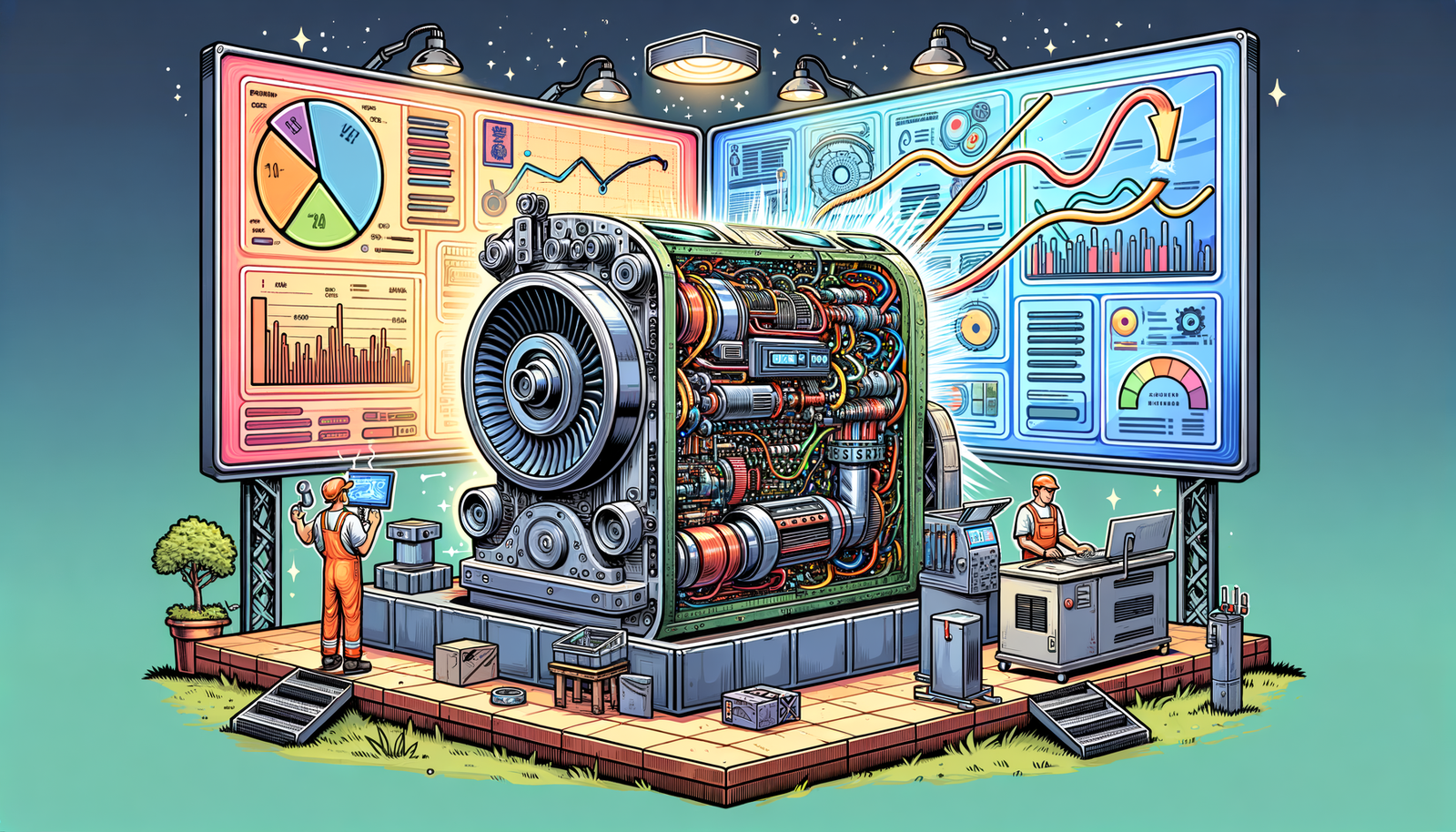Your Cart is Empty
Customer Testimonials
-
"Great customer service. The folks at Novedge were super helpful in navigating a somewhat complicated order including software upgrades and serial numbers in various stages of inactivity. They were friendly and helpful throughout the process.."
Ruben Ruckmark
"Quick & very helpful. We have been using Novedge for years and are very happy with their quick service when we need to make a purchase and excellent support resolving any issues."
Will Woodson
"Scott is the best. He reminds me about subscriptions dates, guides me in the correct direction for updates. He always responds promptly to me. He is literally the reason I continue to work with Novedge and will do so in the future."
Edward Mchugh
"Calvin Lok is “the man”. After my purchase of Sketchup 2021, he called me and provided step-by-step instructions to ease me through difficulties I was having with the setup of my new software."
Mike Borzage
Design Software History: Digital Twins and Predictive Maintenance: Revolutionizing Asset Management Through Real-Time Data and Advanced Analytics
July 29, 2024 5 min read


Introduction to Digital Twins and Predictive Maintenance
Definition of Digital Twins
The concept of Digital Twins refers to a virtual representation that serves as the real-time digital counterpart of a physical object or process. The origins of digital twins can be traced back to the early days of computer-aided design (CAD) and simulation technologies. At its core, a digital twin integrates data from various sources to create a dynamic digital model that evolves in parallel with its physical counterpart.
Key characteristics and functionalities of digital twins include:
- Real-time Data Synchronization: Continuous data exchange between the physical entity and its digital counterpart.
- Predictive Analytics: Leveraging machine learning and data analytics to forecast future states and behaviors.
- Simulation Capabilities: Running various scenarios to predict outcomes and optimize processes.
- Interactive Visualization: Providing a visual interface for monitoring and interaction.
Predictive Maintenance Overview
Predictive maintenance is a proactive approach to maintenance that leverages data analytics to predict equipment failures before they occur. Unlike traditional maintenance strategies, which are either reactive (fixing after a failure) or preventive (regular scheduled maintenance), predictive maintenance aims to minimize downtime and extend the life of equipment by addressing issues before they escalate.
The key differences from traditional maintenance approaches include:
- Reduced Unplanned Downtime: By predicting failures in advance, systems can be maintained before breakdowns, reducing costly downtime.
- Optimized Maintenance Schedules: Maintenance activities are performed only when necessary, enhancing resource utilization.
- Cost Savings: Reducing unexpected failures and optimizing maintenance schedules leads to significant cost reductions.
Importance of Integration
The integration of digital twins into predictive maintenance systems is pivotal due to their ability to provide real-time insights and detailed simulations. Digital twins enable continuous monitoring and analysis of assets, improving decision-making processes and maintenance efficiency. The key benefits of integrating digital twins in predictive maintenance include:
- Cost Savings: Lower maintenance costs by predicting and addressing issues early.
- Reduced Downtime: Minimizing unexpected failures and optimizing repair schedules.
- Improved Efficiency: Enhanced asset performance and extended lifecycle through timely maintenance actions.
Historical Development of Digital Twins
Origins and Early Use Cases
The concept of digital twins dates back to the early 2000s, with NASA being one of the earliest adopters for space exploration missions. NASA utilized digital twins to create virtual models of spacecraft, enabling engineers to simulate and analyze the impact of various conditions on the physical spacecraft. This early adoption demonstrated the potential of digital twins to enhance predictive capabilities and improve mission outcomes.
Beyond space exploration, initial industries that leveraged digital twins included manufacturing and aerospace. In manufacturing, digital twins were used to optimize production processes and maintain equipment, while in aerospace, they helped in monitoring and maintaining aircraft systems.
Technological Advancements
The evolution of enabling technologies has significantly advanced the capabilities of digital twins. Key technologies that have contributed to this evolution include:
- Internet of Things (IoT): IoT devices and sensors provide the real-time data necessary for creating accurate digital twins.
- Big Data: The ability to collect and analyze vast amounts of data enhances the predictive power of digital twins.
- Artificial Intelligence (AI): AI and machine learning algorithms enable advanced predictive analytics and decision-making.
The role of simulation and modeling software has been crucial in advancing digital twin capabilities. Software tools like ANSYS, MATLAB, and Simulink provide powerful platforms for creating and simulating digital twins, allowing engineers to test and optimize systems before implementing changes in the physical world.
Pioneering Companies and Individuals
Several companies and individuals have played a significant role in the development and advancement of digital twins. Notable companies include:
- GE Digital: Pioneered the Industrial Internet of Things (IIoT) and developed the Predix platform for digital twins.
- Siemens: Developed the MindSphere platform, an open IoT operating system that leverages digital twins for industrial applications.
- IBM: Utilized its Watson AI platform to enhance digital twin capabilities and predictive maintenance solutions.
Influential figures such as Dr. Michael Grieves, who is credited with formalizing the concept of digital twins, have significantly impacted the field. His work laid the foundation for the widespread adoption and development of digital twins across various industries.
Implementation of Digital Twins in Predictive Maintenance
Core Components and Architecture
The implementation of digital twins in predictive maintenance involves several core components and architectural elements, including:
- Sensors and Data Acquisition Systems: These devices collect real-time data from physical assets, providing the necessary information for creating and updating digital twins.
- Analytical and Machine Learning Models: These models analyze the collected data to predict potential failures and optimize maintenance schedules.
- Real-time Monitoring and Feedback Loops: Continuous monitoring of assets allows for real-time adjustments and feedback, improving maintenance accuracy and efficiency.
Case Studies and Real-World Applications
In the automotive industry, digital twins are used for predictive maintenance in connected vehicles. By continuously monitoring vehicle systems, digital twins can predict potential issues and schedule maintenance before failures occur, enhancing vehicle reliability and customer satisfaction.
In the energy sector, digital twins are applied to wind turbines and power grids. By analyzing data from sensors embedded in turbines, digital twins can predict maintenance needs, optimize energy production, and reduce downtime. Similarly, for power grids, digital twins help in predicting and preventing outages, ensuring a stable energy supply.
In manufacturing, smart factories leverage digital twins to monitor and optimize production lines. By simulating various scenarios and predicting equipment failures, digital twins enable manufacturers to improve production efficiency, reduce downtime, and extend the life of machinery.
Challenges and Solutions
Despite the numerous benefits, implementing digital twins in predictive maintenance also presents challenges, including:
- Data Quality and Integration Issues: Ensuring the accuracy and consistency of data from various sources can be challenging. Solutions involve implementing robust data validation and integration processes.
- Cybersecurity and Data Privacy Concerns: Protecting sensitive data from cyber threats is critical. Employing advanced security measures and encryption techniques can mitigate these risks.
- Overcoming Resistance to Technology Adoption: Encouraging stakeholders to embrace digital twin technology requires demonstrating its value and providing adequate training and support.
Future Trends and Innovations
Emerging Technologies Enhancing Digital Twins
Several emerging technologies are poised to further enhance digital twins and their application in predictive maintenance. These include:
- AI and Machine Learning: Advanced AI algorithms and machine learning models are refining predictive analytics, leading to more accurate and reliable maintenance predictions.
- Advanced Simulation Tools and High-Performance Computing: New simulation tools and increased computational power enable more complex and detailed digital twin models.
- Integration with AR and VR: Augmented reality (AR) and virtual reality (VR) technologies provide immersive experiences for maintenance, allowing technicians to interact with digital twins in a more intuitive manner.
Expanding Horizons and Applications
The potential applications of digital twins in predictive maintenance are expanding into new industries and domains. Future areas of adoption include:
- Smart Cities: Digital twins can be used to monitor and maintain urban infrastructure, enhancing city management and sustainability.
- Healthcare: Digital twins of medical devices and systems can predict maintenance needs, ensuring optimal performance and patient safety.
- Transportation: Digital twins can optimize maintenance schedules for public transportation systems, reducing downtime and improving service reliability.
Conclusion
The integration of digital twins in predictive maintenance is transforming how industries approach maintenance and asset management. By leveraging real-time data, advanced analytics, and simulation capabilities, digital twins provide significant benefits, including cost savings, reduced downtime, and improved efficiency. As technologies continue to evolve, the future of digital twins promises even greater innovations and applications, driving further advancements in predictive maintenance and beyond.
Also in Design News

ZBrush Tip: Optimizing ZBrush Models with the Curve Bridge Brush Technique
January 15, 2025 2 min read
Read More
Revit Tip: Enhance Design Precision with Revit's Radial Array Tool
January 15, 2025 2 min read
Read More
AutoCAD Tip: Mastering AutoCAD's Revolve and Sweep Tools for Advanced 3D Modeling
January 15, 2025 2 min read
Read MoreSubscribe
Sign up to get the latest on sales, new releases and more …


